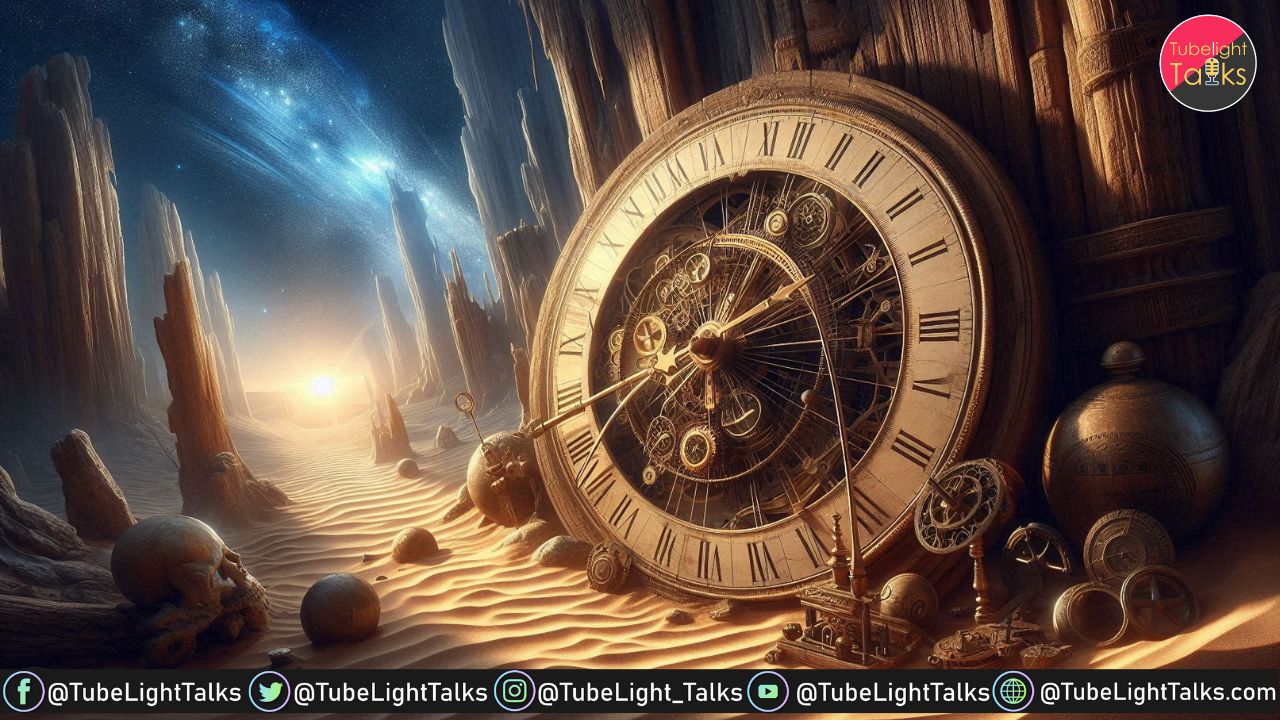This article explores the evolution of timekeeping through various ancient devices. From the use of sundials and water clocks to the invention of the pendulum clock, it explores how different civilizations measured time before the advent of modern clocks. The journey begins with early methods using astronomical bodies and moves through the development of more precise instruments like the candle clock, hourglass, and eventually, the quartz clock.
Highlights: Ancient Timekeeping Devices
– Introduction to the awareness of time in ancient civilizations.
– Detailed explanation of the candle clock and its historical significance.
– Overview of the hourglass and its precise timekeeping method.
– Insights into sundials and obelisks, with a focus on the Konark sundial in Odisha.
– Information on the Jantar Mantar, the world’s largest sundial clock.
– Description of water clocks and their use in various ancient cultures.
– Sumerians’ advancement in horology by the adoption of the sexagesimal system.
– The invention and accuracy of the pendulum clock by Christian Huygens.
– The discovery and importance of quartz clocks by Jacques and Pierre Curie.
Early Timekeeping: Using Natural Resources in Ancient Civilizations
In ancient civilizations, the movement of astronomical bodies in the sky became one of the first methods used to measure time. Apparatuses used to measure time varied based on culture and establishment. Long before clocks were invented, people measured time using natural resources like the position of planets, mountains, shadow lengths, stones, and candles.
The Candle Clock: An Ancient Timekeeping Innovation
The inventor of the candle clock is unidentified, yet a Chinese poet, Django, referred to it first in 520 A.D., according to sources. The candle is marked with gradations to exhibit the course of time. As the candle burns down, the lines become observable. This approach to timekeeping was used in ancient Japan, China, and Europe.
The Hourglass: Precision in Timekeeping from the 14th Century
The hourglass is known to be one of the most precise methods of timekeeping devices. It was invented and came into use in the 14th century. Made up of conical-shaped glass vertically aligned with a narrow center, it was filled with an appropriate quantity of sand. When placed upside down, the fine particles of sand flowed down into the lower glass, and the duration of time was measured. Various-sized hourglasses were used to measure time.
Sundials and Obelisks: Ancient Methods of Solar Timekeeping
Sundials and obelisks were commonly used in ancient times. People used this method by observing a flat surface with a raised pointer called a gnomon, which casts a shadow onto the surface. Its shadow changes in length and position at different intervals.
The Konark Sundial in Odisha, constructed in the 13th century, was used to calculate the precise time of day based on the sun. The Konark wheel is 9 feet in diameter and has 8 larger spokes and 8 inner spokes. The temple has 24 (12 pairs) wheels that represent the Sun God. The Konark wheel’s lower half represents the day, while the upper half signifies the night, with detailed engravings on the chariot wheel to read hours and minutes.
Jantar Mantar: The World’s Largest and Most Accurate Sundial
The world’s largest sundial clock is in India’s first geometrically planned city, Jaipur. Jantar Mantar is constructed at five sites in India: Delhi, Banaras, Jaipur, Mathura, and Ujjain. It was constructed by Maharaja Sawai Jai Singh II of Jaipur between 1724-1735. This monumental stone timekeeping instrument is the most accurate one. Not only can one see 19 observations in Jantar Mantar, but there are also other instruments for compiling astronomical calculations and predictions.
Water Clocks: The Ancient Clepsydra and Ghatika Yantra
Also known as the clepsydra, the water clock is a unique time-measuring device that consists of a container with a hole at its bottom, allowing water to flow at a constant rate. The container is marked with subsequent gaps to indicate time. The Ghatika Yantra is water-based and was invented by ancient Indians under Prolaya Vena Reddy during the Reddy dynasty. Apart from India, water clocks were also used in ancient China, Rome, Greece, and Egypt.
The Evolution of Timekeeping: From Pendulum to Quartz Clocks
History of timekeeping advanced based on the method of calculation adopted by the Sumerians. They advanced in horology by adopting the sexagesimal system in the 3rd millennium B.C.E. It is a means of counting based on the power of sixty as a base. Dutch polymath Christian Huygens designed the pendulum clock in 1656. It was more accurate in timekeeping than other devices. Other innovations during this period include inventions for striking clocks. Electric clocks were invented in 1840 and were in use until further advancements in the 1940s when quartz timers came into existence, marking a remarkable change in timekeeping history. This intricate design gave precise measurements of time and frequency. The quartz clock is a modern device of time measurement, known for its accuracy compared to mechanical clocks.
The Discovery and Importance of Quartz in Timekeeping
Jacques and Pierre Curie discovered quartz and its properties in 1880. The timepiece used quartz crystals to keep time. Quartz is a mineral made of silicon dioxide, functioning as a tuning fork. The quartz vibrations are used to keep precise time.
Timeless Teachings of Sant Rampal Ji Maharaj
Enlightened Sant Rampal Ji Maharaj has profound wisdom and spiritual teachings. He emphasizes the importance of understanding the timeless nature of the soul. Sant Rampal Ji Maharaj guides us to measure and understand our spiritual journey through the timeless teachings of holy scriptures. His true devotees can navigate the complexities of life. Sant Rampal Ji’s teachings serve as a spiritual clock, helping us align our lives with divine principles and attain true pleasures and salvation.
FAQs About Ancient Time Measuring Devices:
1. How were ancient time measuring devices used to track time?
Ancient time measuring devices like sundials, water clocks, candle clocks, and hourglasses relied on natural elements such as the sun’s shadow, the flow of water, the burning of candles, and the flow of sand to indicate time intervals.
2. What is the significance of the Konark sundial?
The Konark sundial was used to calculate the precise time of day based on the position of the sun. The Konark wheel has intricate detailing, representing both day and night.
3. Who invented the pendulum clock and why was it important?
The pendulum clock was invented by Dutch polymath Christian Huygens in 1656. This invention led to more precise timekeeping, which was crucial for navigation and scientific experiments.
4. How did water clocks work and where were they used?
Water clocks, or clepsydras, consisted of a container with a hole at the bottom, allowing water to flow out at a constant rate. The container was marked with time intervals. These clocks were used in ancient India, China, Rome, Greece, and Egypt.
5. What role did quartz clocks play in modern timekeeping?
Quartz crystals vibrate at a precise frequency, making these clocks far more accurate than mechanical clocks. Quartz clocks became the standard for timekeeping in the 20th century.










